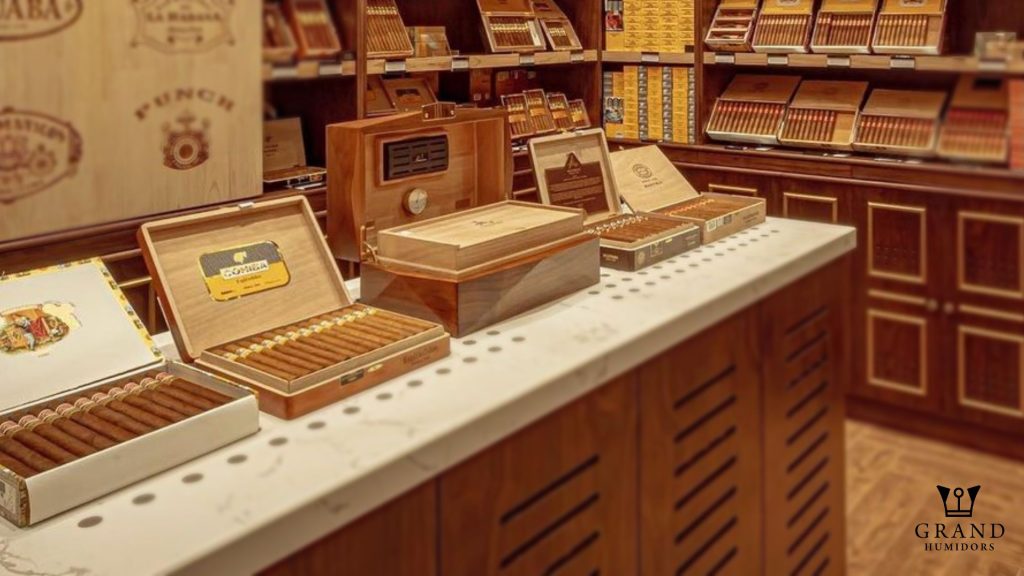For large cigar store owners, cigar shop owners who don’t want to deal with a manufacturer, or cigar aficionados who have a spare room or storage in the room and are itching for a new home improvement project aside from the large humidors. homemade walk-in humidors can be a cost-effective and rewarding experience. While this plan is an important step, it is far from impossible and will add a unique dimension to your home or business. Creating a walk-in humidor is a kind of project that seems to be much easier to work with made in the USA.
Walk-in humidor should be able to maintain absolute temperature control and humidity regardless of the outdoor climate: it’s like creating a self-made ecosystem in your home or work. If you don’t know anything about humidors before you make it and after some preliminary research, it will be scary to consider all the issues related to wood movement and moisture on the humorous interior. Of course, you can’t succeed if you don’t try. Here are some construction details:
Material Used
- Hygrometer and Humidifier
- 1/8 Inch Spanish cedar
- 1/42 Walnut paper backed veneer
- ½ Inch Red Oak
- Decorative inlay strips
- ½ Inch Maple plywood
- Redwood burl slab
Tools
- Clamps
- Table saw
- Flush cut saw (or some fine tooth small saw)
- Chisels
- Plunge router (could be optional)
- Sandpaper
The humidor is made of Red Oak for the sides, Maple plywood up and down, walnut wood, Redwood burl edge banding, and other inserts. Inside, Spanish cedar is installed. It is important to note that up and down there is a plank due to the movement of the wood. Then this expands and the contractors cut the grain as it absorbs and releases humidity from the humidification system if the upper and lower bouts featured two cutaways, for easier access to the higher frets.
Step 1
Most of these materials are minus Spanish cedar and inlay strips. Choose the room you would like to use for your humidor. Add a small air conditioner to the walk-in humidor to control air circulation. Be aware that this may require additional care, such as regular disposal of residual water line install ceramic floor tiles. The room will be very humid and ceramic tiles are resistant to warping in humidity.
Step 2
After this, Install 100% Spanish cedar wall panels. Although paneling an entire room with Spanish cedar can be expensive, it is the preferred material. Other types of cedar can cause odors that can ruin a cigar.
Step 3
Install 100 cedar Spanish cedar shelves. For display purposes, shelves should be installed at 40 to 45 degrees. Shelves should be separated by stone to allow air circulation.
Step 4
After this, Install LED lights or compact fluorescent bulbs Incandescent provide high heat and can adversely affect the carefully controlled temperature and humidity of the room. Do not point the lights directly at your cigars.
Step 5
Install an automatic humidifier and a thermometer to monitor the temperature. The size of the humidifier will vary depending on the size of your moisturizer. Follow the 70/70 rule: 70% humidity at 70 degrees F is the best temperature for cigars.
Step 5
Use router tables to create rabbets on all sides of the box. You should use to make a tape to avoid tears. This can also be done on a table saw, either with a regular blade. When the sides are complete, cut the tops into sizes from maple plywood, glue the whole thing together, and put a veneer on top.
Step 6
Using a table saw, cut small rabbets for edge banding on all sides of the box. This step is simple and should be done without adjusting the fence. After that, cut small red wooden strips from a small part. Masking tape is used here so that they do not break. This wood is very easy to break.
Step 7
To make space for the inlay, spread a few shallow cuts on the edges of the box. This step is similar to the Edge Banding cut but much shallower. Now you can glue all the edges to the banding and inlay. After shining, you should send the whole thing with random orbital sand. Be careful not to get sand from the hidden path here.
Step 8
This is terrible step. Cut the whole thing in half. This is to be done with multiple sides all around, so it is important to apply the blade line each time. Next, cut the grooves for the quadrant hinges using a plunge rotor. This can also be done by drilling with Forstner bits and some chisels which you used to clean.
Different Types Of Walk-In Humidor
By definition, a walking humidor is a cigars store where you can stand. However, there are different ways to produce one. Each type has its advantages and disadvantages as well as some factors to keep in mind.

Partial Room Conversion Walk-In Humidor
Loosening between the top and bottom options, the partial humidor is ideal if you have a spacious room where its section can be used for cigar storage. This type of humidor is simple in the sense that it uses a room design and does not require you to make a roof. However, it poses a challenge that you will need to make a solid wall and door.
Freestanding Walk-In Humidors
Often seen in small tobacco shops, a freestanding walk-in humidor is a unit that contains it inside the room. In some cases, they are modular humidors that can be customized but usually, the manufacturers offer them as a single-size solution. The obvious advantage of a freestanding walk-in humidor is that it is very small and only stays in the room. For people who just want the humidor to enter the basement, a human cave, or a study, it is a great option.
Full Room Conversion Walk-In Humidor
Creating a Full Room Conversion Walk-In Humidors not the same as making a wardrobe. In short, he basically builds a room inside the room. However, the full flow room inside the humidor is very different. If you have a separate room that you would like to turn into great humidity, this is easy to do. While you can’t build any of the walls, the job will be to mark and replace the existing line.

Michael is the editor of the Cigar Lounge Blog. An avid Cigar lover, he is passionate about the industry. Michael’s claim to fame is his collection of Cigars from 15 different countries. He own’s an Adorini Cabinet Humidor.




